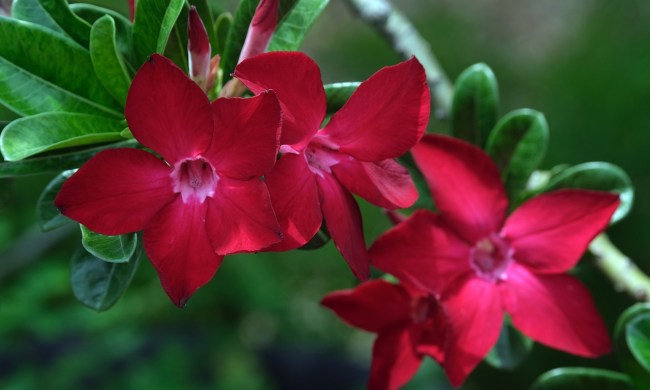Prayer plants, or marantas, are some of the most fascinating houseplants you can grow. They have oval leaves that are typically dark green with lighter markings, but what they’re best known for is the way the leaves move over the course of the day. Prayer plants follow the sun with their leaves, making these tropical plants interesting to watch.
While they may be known for their leaves, some may wonder: Do prayer plants flower? What do their flowers look like, and how can you encourage them to bloom more? If you’re curious about these questions, then we have the answers in this guide to prayer plant flowers.
Do prayer plants flower?

Prayer plants can flower, although it is rather rare for them to do so. The flowers tend to be pink, white, or purple, and they’re fairly small. Flowers are a good sign for your plant, as prayer plants won’t bloom unless conditions are perfect. A blooming prayer plant means your plant is thriving! However, perfection is hard to achieve for these tropical plants, so don’t worry if your prayer plant hasn’t bloomed. It doesn’t mean your plant isn’t healthy, and the problems that prevent a prayer plant from blooming are often minor.
Some gardeners will remove the flowers as they bloom or just before they bloom. Unlike deadheading a plant, removing flowers before they bloom makes the plant less likely to bloom again. Some gardeners choose to do this because growing flowers takes a lot of energy for the plant, and the flowers are small and typically not showy. Since prayer plants are usually grown for their leaves, removing flower buds as they appear allows the plant to focus on growing and maintaining its leaves.
Encouraging a prayer plant to bloom

If you want to see your prayer plant bloom, the best way to encourage it is to focus on giving it the best care you can. Make sure your prayer plant is warm, with no nearby drafts or air vents to cool it off, and 65 to 75 degrees Fahrenheit is ideal for these tropical plants. Humidity is equally important. Prayer plants need a humid environment to thrive, and they rarely flower in dry air. Aim for around 50% humidity or slightly higher near your prayer plant.
While you can mist them, this can also lead to an increase in fungal infections if you aren’t careful. A humidity tray is a better option, but you can also move them near, but not directly in front of, the bathroom door on days when you take a hot shower. When you open the door, the steam will increase the humidity without the leaves themselves getting wet, as long as you position the plant carefully.
Bright, indirect light is best for prayer plants. Too much direct light can scorch their leaves, but not enough light will leave the plant without enough energy to bloom. Using grow lights is helpful if your windows don’t get enough light. If your windows get too much direct light, a gauzy curtain will help filter it for your plant.
Fertilizing will also give your prayer plant the extra boost it needs to bloom. They don’t need a lot of fertilizer, but a light dose of water-soluble fertilizer during the growing season can be helpful. To encourage blooming, choose a fertilizer that’s fairly balanced but has slightly higher phosphorus, as phosphorus is the major nutrient plants need when blooming.
Are prayer plants more likely to bloom outdoors?

This is a more tricky question, as it depends on where you live. If your natural climate is similar to the native environment of the prayer plant, then your prayer plant may be more likely to bloom outdoors. You may still need to put in some extra effort, including finding the right spot to place it and fertilizing it during the growing season, but overall, you should have an easier time.
However, if you live somewhere with an incompatible climate, your prayer plant may struggle more outdoors than it would indoors. Regions with colder or dryer climates aren’t right for prayer plants, so your prayer plant is less likely to bloom outdoors. With indoor plants, you can control most aspects of the environment, so you can provide your prayer plant with the best conditions.
Prayer plants are wonderful houseplants, perfect for hanging baskets or office desks. If your prayer plant hasn’t ever bloomed, now you should have a better understanding of why that is. Even better, if you want to see prayer plant flowers for yourself, you’re prepared to put in the work and get those results! It may take some patience, along with some trial and error, but it is possible if you work at it.




